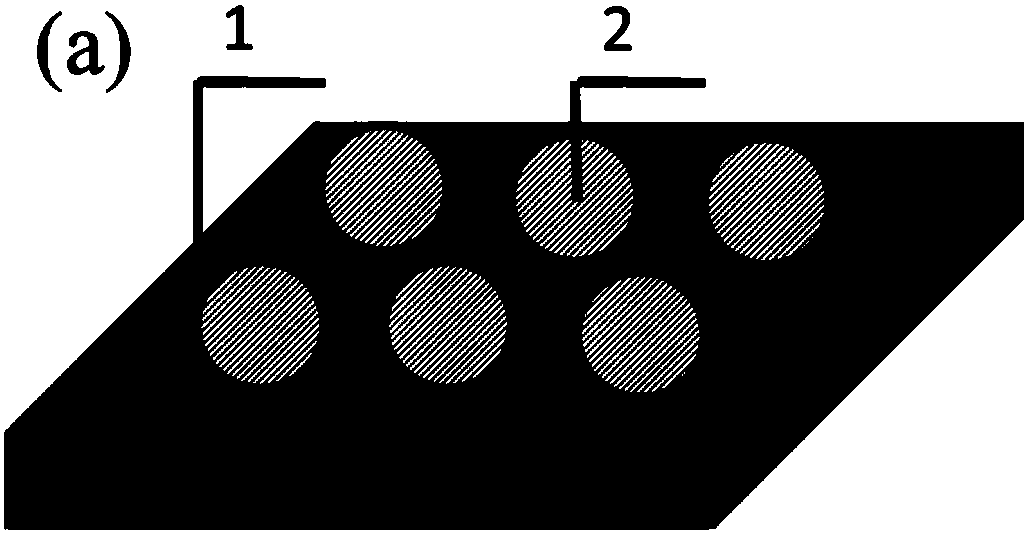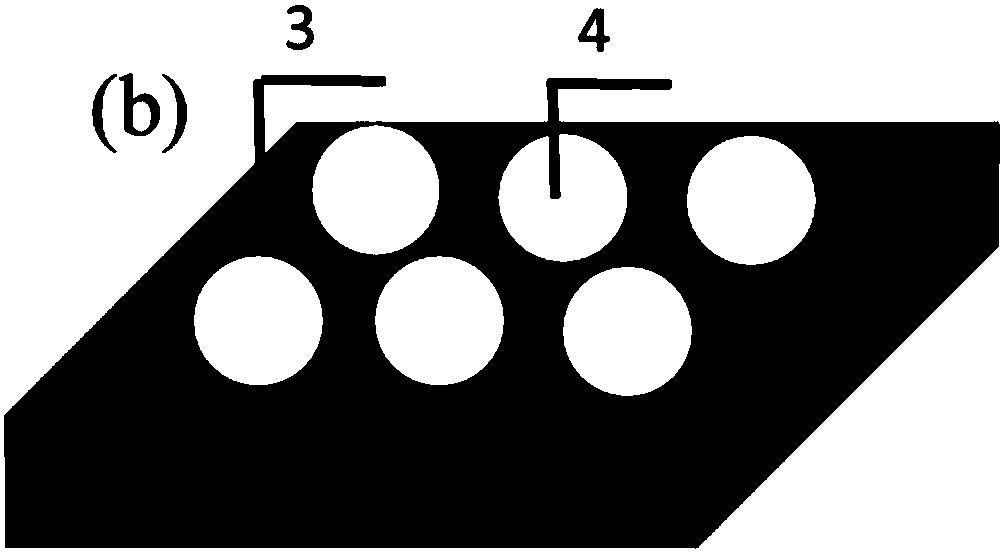Gas-sensitive membrane and preparation method and application thereof
A gas-sensing film and single-layer technology, applied in the field of gas-sensing sensors, can solve the problems of not greatly improving gas-sensing performance, poor gas-sensing performance, and increased specific surface area, achieving good application prospects, improving performance consistency, Good batch stability
- Summary
- Abstract
- Description
- Claims
- Application Information
AI Technical Summary
Problems solved by technology
Method used
Image
Examples
Embodiment 1
[0048] (1) The sensor substrate is made by conventional technology, including Si 3 N 4 / Si substrate cleaning, fabrication of Pt heating resistors by photolithography, deposition of insulating layers such as silicon oxide or aluminum oxide, fabrication of gold finger electrodes by photolithography, and exposure of the gold finger electrode area through conventional photolithography processes.
[0049] (2) Then spread polystyrene (PS) microspheres with a diameter of 500nm on the water surface. Due to the repulsion between the microspheres, a self-assembled microsphere layer will float on the water surface. The single-layer PS sphere was picked up from the water surface with the sensor substrate wafer, dried and put into the magnetron sputtering apparatus. Sputtering SnO with a power of 100W 2 / Pd target for 30 minutes to obtain SnO with a thickness of about 100nm 2 film.
[0050] (3) Finally, soak the wafer in a chloroform solvent for half an hour to remove the PS microsphe...
Embodiment 2
[0053] (1) The sensor substrate is made by conventional technology, including Si 3 N 4 / Si substrate cleaning, fabrication of Pt heating resistors by photolithography, deposition of insulating layers such as silicon oxide or aluminum oxide, fabrication of gold finger electrodes by photolithography, and exposure of the gold finger electrode area through conventional photolithography processes.
[0054] (2) Then spread the polyacrylate microspheres with a diameter of 2000nm on the water surface. Due to the repulsion between the microspheres, a self-assembled microsphere layer will float on the water surface. The single-layer polyacrylate microspheres were picked up from the water surface with the sensor substrate wafer, dried and put into the magnetron sputtering apparatus. Using 120W of power to sputter WO 3 Target for 50 minutes to obtain WO with a thickness of about 500nm 3 film.
[0055] (3) Finally, place the film in a muffle furnace to raise the temperature to 500° C. ...
Embodiment 3
[0058] In addition to replacing the diameter of polystyrene (PS) microspheres with 8000nm, and sputtering SnO with a thickness of about 100nm 2 Except that the thin film is replaced by sputtering 800nm ZnO, other preparation methods and conditions are the same as in Example 1.
[0059] The yield rate of the methane sensor obtained in this embodiment is >95%, and the consistency deviation is <10%.
PUM
| Property | Measurement | Unit |
|---|---|---|
| diameter | aaaaa | aaaaa |
| thickness | aaaaa | aaaaa |
| diameter | aaaaa | aaaaa |
Abstract
Description
Claims
Application Information
 Login to View More
Login to View More - R&D
- Intellectual Property
- Life Sciences
- Materials
- Tech Scout
- Unparalleled Data Quality
- Higher Quality Content
- 60% Fewer Hallucinations
Browse by: Latest US Patents, China's latest patents, Technical Efficacy Thesaurus, Application Domain, Technology Topic, Popular Technical Reports.
© 2025 PatSnap. All rights reserved.Legal|Privacy policy|Modern Slavery Act Transparency Statement|Sitemap|About US| Contact US: help@patsnap.com


